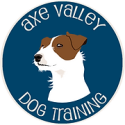Struggling with your dog’s prey drive? Learn how to manage it and turn it into a strength!

Does your dog chase everything that moves?
If your walks feel more like a game of tug-of-war every time your dog spots a squirrel, or if you’re worried your dog may never come back the second you unclip the lead, you’re not alone. Many dog guardians struggle with high prey drive, and it can be frustrating and stressful. But don’t worry—prey drive isn’t a bad thing! With the right management and training, you can channel this natural instinct into something positive.
Let’s dive into what it is, how to manage it, and how to work with your dog instead of against them.
What is Prey Drive?
Prey drive is your dog’s natural instinct to find, chase, and capture prey. Historically, dogs needed this drive to survive—if they didn’t hunt, they didn’t eat. While modern dogs no longer need to hunt for food, the instinct remains deeply ingrained.
Over time, we have bred dogs to strengthen certain hunting instincts, creating breeds that are great at herding, fetching, tracking, and catching pests.
How to Tell if a Dog Has High Prey Drive
Dogs with a high prey drive often display some or all of the following behaviours:
- Tracking scents in the air or on the ground
- Fixating on and staring at small animals (including small dogs) and potential prey
- Stalking towards animals
- Chasing anything that moves
- Lunging or biting at moving objects
- Pulling on the lead when spotting prey
Do Terriers Have a Strong Prey Drive?
Yep! Terriers were basically designed to be tiny, fearless exterminators—chasing critters underground. They’re the ultimate rat-busting machines! Thanks to this history, most terriers have a prey drive that’s cranked up to eleven compared to other breeds.
Can You Train a Dog to Have Less Prey Drive?
No, but you can manage it. Prey drive is a natural instinct—you can’t remove it, and trying to suppress it can lead to frustration and unwanted behaviours. Instead, focus on providing appropriate outlets for your dog’s prey drive.
Imagine if an alien species raised you and stopped you from engaging in natural human behaviours—like talking, laughing, or expressing yourself. How would you feel? Frustrated, anxious, destructive? The same applies to our dogs.
How to Manage a Dog with High Prey Drive
1. Prevention
- Prevent your dog from rehearsing unwanted behaviours.
- Use a lead in areas with high prey distractions (e.g., around livestock, busy wildlife areas, parks).
2. Provide Suitable Outlets
- Engage in games and training that satisfy their needs.
3. Build Engagement with Your Dog
- Have fun together outdoors, not just at home.
4. Teach Impulse Control
- Training exercises like ‘leave it’ and ‘wait’ can help.
5. Train a Reliable Recall
- But remember, if your dog is having fun with you, they’ll naturally want to stay close.
Prevention is key. If your dog experiences the thrill of chasing prey, stopping them from running off the next time will be even harder. Keeping them on a lead in high-risk areas is the easiest way to avoid this problem.
👉 If you’d like support building a recall your prey-driven dog can actually follow, you might enjoy my follow-up blog: How to Train a Rock-Solid Recall for High-Prey-Drive Dogs.
It walks you through step-by-step training, safe rewards, long-line work, and how to avoid poisoning your cue.
What Games and Toys Are Good for Dogs with High Prey Drive?
Engaging your dog in the right activities can help satisfy their instincts and improve their behaviour. Here are some ones to try:
- Chasing toys & games – Toys that mimic prey movements like these
- Scent trails & tracking games – Great for working their brains. Come and have a go in our scentwork classes.
- Mantrailing – A fun way to use your dog’s tracking skills. Also covered in our scentwork classes.
- Retrieve – A fantastic outlet for the chase instinct
- Sheepballs – A great herding-style game for the collies and wannabe sheepdogs
- Barn Hunt – An increasingly popular activity that channels your dog’s inner terrier
- Stalking games – Teaching your dog to calmly watch moving food.
- Gundog training – Excellent for breeds with a strong hunting instinct
The Key: Have Fun with Your Dog!
Your dog wants to enjoy their instincts with you. If you engage with them in the right way, they’ll see you as the most exciting part of their world. And guess what? This naturally improves recall and strengthens your bond.
Final Thoughts
Prey drive isn’t something to be ‘fixed’—it’s something to be understood and worked with. By managing it correctly and providing the right outlets, you’ll have a happy, fulfilled dog who looks to you for guidance instead of running off at the first sign of movement.
Have you experienced challenges with your dog’s prey drive? What strategies have worked for you? Let’s chat in the comments!
